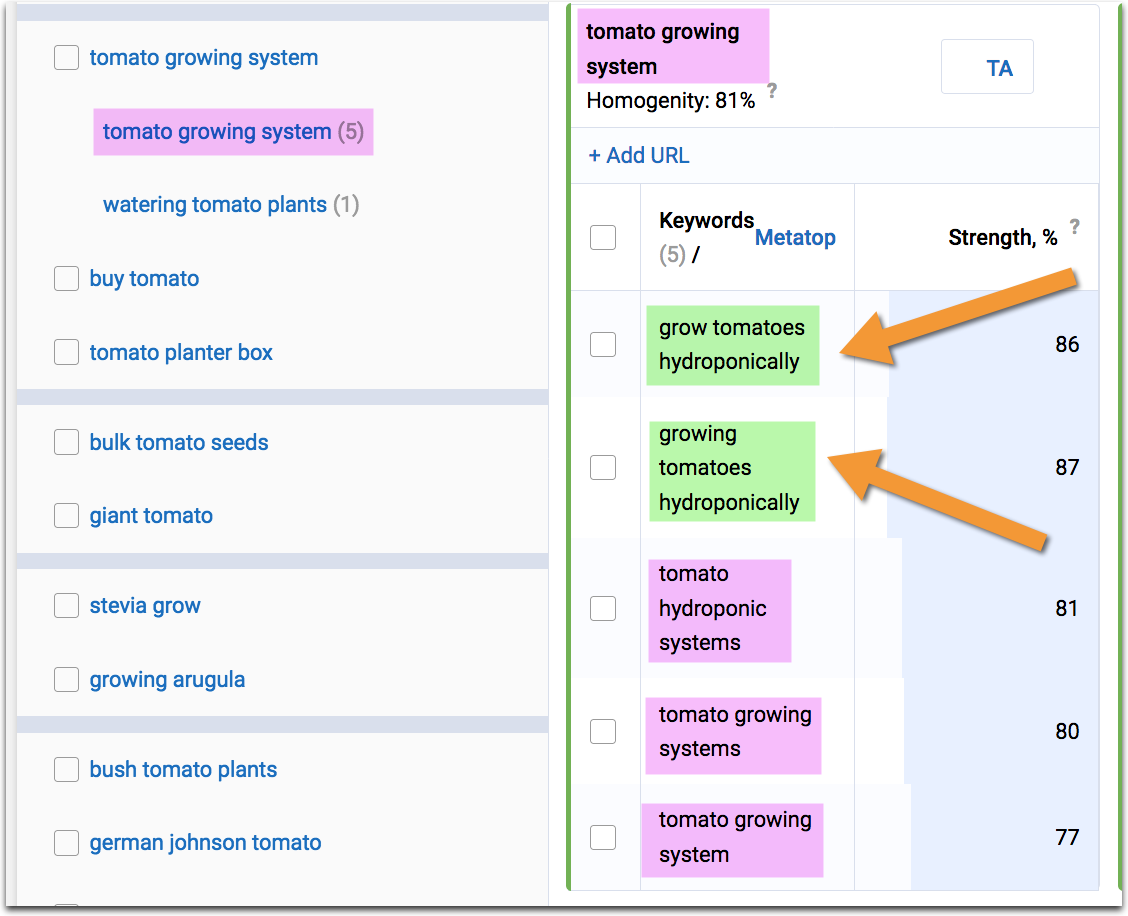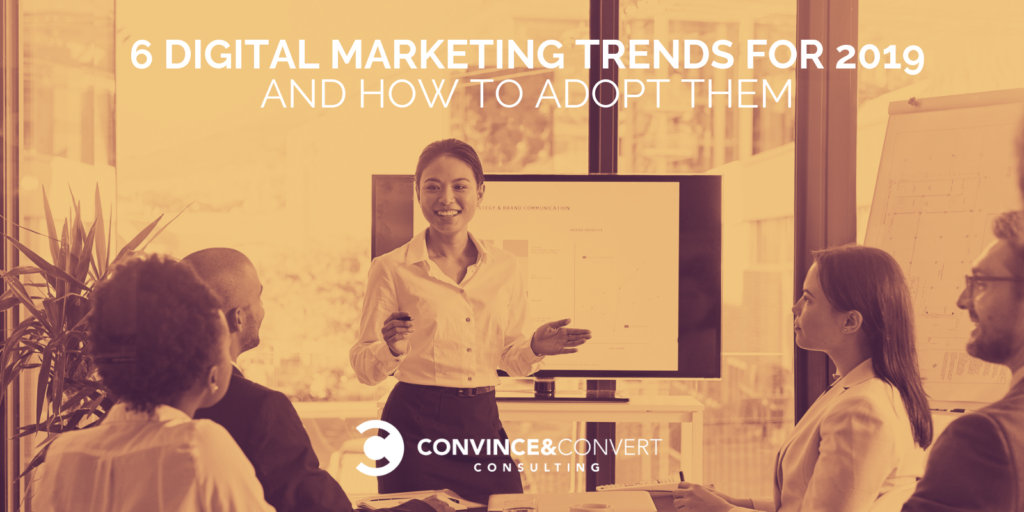While the way that businesses have used marketing campaigns over the years has changed, the reasons have not. Every business wants to reach their ideal customer just when that customer needs it.
With the constant flux of new technologies, the way that companies need to reach these customers has to evolve to make up the difference.
Here are a few tips to help pull your business marketing into the new year and get you more business.
Digital Marketing Trend #1: Omnichannel Marketing
Today’s consumer uses multiple channels to research, compare, buy from and interact with businesses. These can be both online and offline channels, and the latter include your own website as well as Amazon, eBay, Facebook, etc.
Connecting the dots between multiple channels ensuring consistent user experience and encouraging the consumer to engage with your brand at every touchpoint across multiple channels is called omnichannel marketing.
The newest research study by BigCommerce offers a detailed look into how different generations of consumers approach omnichannel shopping as well as what they expect from brands throughout their buyer’s journey.
The takeaways from the study are very interesting:
- These days nobody shops exclusively through a single medium
- Younger generations use all kinds of media to purchase products, but they also know no other way to shop
- Younger generations shop in physical stores considerably less (Only 9.6% of Gen Z reports buying items in a physical store), they are more likely to return products and they value speed and ease of shopping experience
With omnichannel presence becoming an expected shopping experience, ensure your product placement everywhere you can. It’s not just about outright selling: Being everywhere means brand recognizability which is another solid way to increase your ROI in the long run. The most obvious channel your brand needs to be include:
- Facebook and Instagram (including Facebook+Instagram ads)
- Amazon (Remember: Amazon is also a search and product discovery channel, so you need to be in its algorithm)
- Google’s Shopping Actions: Google’s multi-channel platform that ensures your buyer’s consistent experience whichever medium they use to search. For example, they can search by voice, use voice commands to add products to cart and make the final purchase from the desktop.
Apart from that, creating consistent brand presence across multiple platforms is an effective way to build familiarity with the brand and engage customers across many channels more consistently. ContentCal is a solid tool that can help you accomplish just that in a more productive less cost-effective way.
ContentCal allows to cross-post your social media updates across multiple channels as well as set up multi-step delegation and moderation process: Encourage your whole team to add unique social media updates to CantentCal’s “Pinboard” and have one (or more) moderator who will ensure the updates align with the brand’s voice and then easily schedule them via drag-and-dropping functionality.
Digital Marketing Trend #2: Artificial Intelligence and Machine Learning
Artificial Intelligence (AI) is the branch in computer science that is all about teaching the machine to think and act like a human being.
Machine learning is usually what runs behind AI algorithms. While AI is all about basically teaching the machine to replace human beings, machine learning is about teaching the machine what a human brains cannot grasp, e.g. complex data mining and future predictions based on current patterns.
In many cases, machine learning and AI are the two terms that are used interchangeably.
To make it easier to fathom, here are a few examples of AI-driven technology we already witness in our digital lives:
- Gmail Smart Compose and Smart Reply features allow the user to compose an entire email with AI based on past emails and typing habits.
- LinkedIn prompts value-added introductions based on who you interacted in the past.
- Facebook Messenger sends auto-responses to your Facebook followers on your brand’s behalf.
The two well-known pioneers in the AI-empowered marketing are:
- Amazon: Using AI to analyze each particular buyer’s decisions and suggest them products they didn’t even know they want or need.
- Netflix: Using AI for content recommendations and beyond. Netflix successfully applies AI for product development too. They have analyzed years of viewer data to create successful products of their own including the successful “House of Cards” show. Put simply, thanks to AI, Netflix knows what people want before they do.
With each new generation, consumers tend to rely on AI-powered algorithms for product discovery more and more. BigCommerce has found that consumers in the age range between 18 and 23 heavily rely on AI-powered personalized product recommendations, seeing ads on social media, and engaging with a brand’s social channels.
One of the best ways to take advantage of machine learning right now is to pick a solid technology partner that already has the technology built in and running in the background.
AI-powered sentiment analysis is the most powerful example of machine learning in action. Today’s sentiment analysis software can not only extract mentions that need your attention but also help your teams handle them properly.
Sentione is a solid example of this forward-thinking sentiment analysis approach. It implements machine learning and natural language mechanisms to extract online context around your brand. Next, Sentione’s AI-powered self-learning agent suggests further action based on the collected data and previous communications with clients:
[Sentione’s AI-powered platform is the future of online interaction with the client]
Digital Marketing Trend #3: Voice Search
The emergence and fast adoption of digital home assistants, like the Amazon Echo, the Google Dot, and Apple’s Homepod, is causing the new searching behavior, i.e. voice search(also known as conversational search).
These smart devices make searching far easier and entirely hands-free. “Alexa, when is the next movie time for The Avengers?” It’s that easy.
With nearly 40% of adults using voice search a day back in 2016, this technology adoption is quickly increasing over time as it becomes more intuitive and reliable. Domino’s has taken the lead, incorporating voice search as a way to increase sales.
With voice and on-the-go searching ability, online search queries have become longer and more specific. But in reality targeting long-tail queries is only the tip of the iceberg. Google had been preparing its algorithm for natural-language searching for ages now. After its Hummingbird update and Rankbrain announcement, we have seen just a few hints at what Google is working on.
Thanks to machine learning, Google understands intent and context much better now than it used to which means keyword matching useless. These days keyword research is a more complicated process. There are a few smart tools already on the market offering a much more sophisticated approach to keyword research. The two tools I mentioned previously are:
TextOptimizer allows you to optimize content to match Google’s (and its users’) expectations (i.e. intent) by analyzing search snippets for each query and suggesting the related terms, concepts and categories.
[TextOptimizer has a web-based version as well as Google Chrome extension and WordPress plugin]
Serpstat analyzes Google’s search engine result pages, finds overlapping URLs and groups your keyword lists by relevancy allowing you to discover concepts behind your queries and optimizing for the group of related keywords:

[Read more about keyword clustering here]
Both the suites represent the new generation of SEO software allowing you to analyze and optimize beyond keyword matching, to better optimize your content and to prepare for any kind of search behavior (be it typed words or voice commands).
Digital Marketing Trend #4: Personalized Marketing
Personalized marketing means providing individualized user experience targeting each separate user of your site or subscriber to your email list.
According to Evergage, nearly 96% of consumers agree that personalized marketing fosters relationship building with the brand. Forrester has found that almost 80% of consumers have recommended, or paid more for a product thanks to a personalized service or experience.
Despite what you may have heard, increasing security and privacy concerns are not going to kill personalized marketing. Today’s consumer expects to receive personalized experience and is ready to give away their personal data in return.
BigCommerce has found that younger generations of consumers don’t mind sharing their personal data in return for perks and personalized experience:
Sites like Netflix, Amazon, and Pinterest, not to mention Google and Facebook, all use personalized marketing campaigns. They mine your search history, what you liked and didn’t like, and provide recommendations for similar products you didn’t even intend to buy.
Digital Marketing Trend #5: Video Marketing and Influencer Marketing
While YouTube is what many people think of first, video marketing can be utilized across social media platforms, like Facebook, LinkedIn, and Instagram stories and Snapchat.
If your videos are short, concise, and entertaining, people will be more likely to share them on other social media sites.
This can have a more substantial impact if an influencer is well-known on the platform, and can put their hat into the ring. These leaders of the industries can help spread the word for your products or content quickly.
Know your target audience, find where they are, and get to work. For more details and tips on various influencer marketing tactics, check out these resources:
- How to Boost On-Site Conversions with Influencer Content
- How to Get the Most Out of Instagram Influencers for Your Affiliate Program
- How to Leverage Influencer Outreach to Build a Better Blog Post
Digital Marketing Trend #6: Visual Search
With the increased availability of smartphones and on-the-go access to the Internet, the searching capabilities are evolving.
While voice search eliminates the need for typing your keywords in a search box and even the screen to interact with the results, visual search transforms the concept of the keyword itself. You don’t need words: You can search by showing the picture.
Apps like Google Lens make it possible to use your camera as a search tool. Landmarks, clothes, art, books, business cards can all be searched through a single image. Product prices, reviews, and retailers can be found through a picture of a book or a picture of clothing.
The best ways to make the most of visual search are:
- Publicize high-quality visuals across your social media channels
- Ensure your product pages have a good variety of high-quality images
- Make sure those images are well optimized for search engines.
- Apart from that, implementing /Product schema for images is another smart step to make. This will add ecommerce context to your images right inside Google Image search:
Conclusion
In 2019, the way consumers search for information and shop has evolved to include AI-powered personalization, advanced segmentation and new content types, slowly incorporating more of these new technologies.
These new technological advances have amazing potential within the marketing sector if you know how to use them to your advantage. With so many other businesses you are competing against across your industry, the faster you learn how to utilize new techniques (including voice and visual search as well as personalization and influencer marketing), the more competitive your business becomes.
For video and personalized marketing, revisiting your current strategy and altering it to fit the needs of your audience is essential. Whatever technique you decide to use moving forward, keep yourself informed of new advances to keep your business ahead of the game.
The post 6 Digital Marketing Trends for 2019 and How to Adopt Them appeared first on Convince and Convert: Social Media Consulting and Content Marketing Consulting.
from Convince and Convert: Social Media Consulting and Content Marketing Consulting https://ift.tt/2Sdrf9y




No comments:
Post a Comment